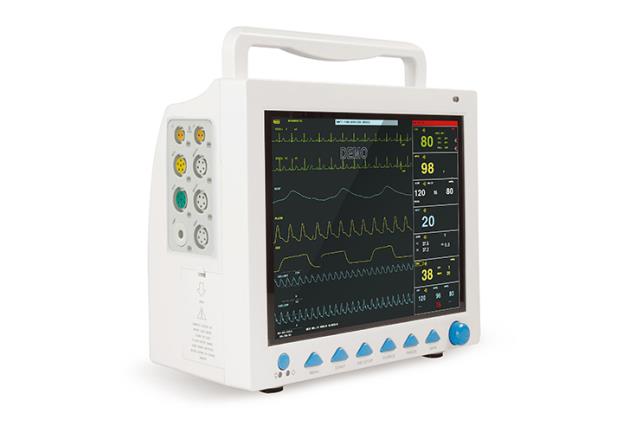In early 2025, security researchers uncovered a critical vulnerability in the Contec CMS8000 patient monitor system – an affordable, widely deployed device in hospitals and clinics worldwide. The device was found to include a hard-coded administrative backdoor accessible via a static IP and embedded Wi-Fi AP.
This kind of vulnerability is alarming enough on its own, but its regulatory consequences under EU law are even more serious. With the updated Radio Equipment Directive (RED) cybersecurity provisions becoming mandatory from August 1, 2025, the CMS8000 is now a textbook case of non-compliance. Here’s why, and what manufacturers must do to adapt.
[Download our complimentary RED Compliance Checklist eBook]
The Vulnerability: A Quiet Threat to Patient Safety
The vulnerabilities, CVE-2025-0626 and CVE-2025-0683, enable unauthenticated remote access to the device’s core functions. An attacker within wireless range or on the same network could:
- Read or alter patient vital sign data
- Disable alarms or tamper with thresholds
- Extract sensitive patient information
- Pivot deeper into hospital networks
This is not just a privacy issue. Lives could be at stake if such a device is tampered with in a clinical setting.

The RED Regulation and Article 3.3: A Security Shift
The Radio Equipment Directive (2014/53/EU) traditionally governed only aspects like radio spectrum efficiency and electromagnetic compatibility. But with Delegated Regulation (EU) 2022/30, the EU expanded RED’s scope to cybersecurity, specifically through Article 3.3(d), (e), and (f).
These provisions become legally binding for CE-marked products starting August 1, 2025, and they apply to any connected radio equipment, including Wi-Fi and Bluetooth-enabled medical devices that fall outside the Medical Devices Regulation (MDR).
Here’s how the CMS8000 violates Article 3.3:
- 3.3(d):“Not harm the network or its functioning nor misuse network resources.”
The backdoor creates an entry point that can be exploited to launch lateral attacks inside hospital networks. - 3.3(e): “Safeguard personal data and privacy.”
No authentication, encrypted data storage, or access logging, a direct failure to protect patient health information (PHI). - 3.3(f): “Protect against fraud.”
Unauthorized data manipulation could lead to falsified readings, triggering fraudulent medical decisions or billing.
Implication: A device like the CMS8000 is not eligible for CE marking under RED. It cannot be sold legally in the EU post-August 2025 unless remediated.
What Manufacturers Must Do Now
With the compliance deadline looming, device manufacturers, especially in the IoT and healthcare space, must begin shifting security left and baking in cybersecurity by design.
Key obligations under RED Article 3.3(d)-(f):
- Perform a full risk assessment on connectivity features (Wi-Fi, BLE, etc.). Use threat modeling tools aligned with EN 18031-1 (forthcoming harmonized standard).
- Secure firmware and software updates. Devices must include secure update mechanisms, protected from rollback and tampering.
- Implement robust access controls. Hardcoded passwords or backdoors must be eliminated. Default credentials should be randomized and require a change on first use.
- Protect personal data in transit and at rest. Use strong encryption and isolate patient data from other services.
- Document and demonstrate compliance. Technical documentation must show adherence to RED cybersecurity requirements. Failure to do so risks market withdrawal or recall.
- Prepare for post-market obligations. Establish a vulnerability management process, including coordinated disclosure and timely patching.
Navigating the Regulatory Overlap: RED, MDR and CRA
Many manufacturers may assume their medical devices are already governed under the Medical Devices Regulation (MDR), and thus exempt from RED. Not necessarily.
- Devices like the CMS8000 that use radio connectivity fall outside MDR and are subject to RED cybersecurity provisions.
- Others, like hospital telemetry gateways or patient data collectors, may be covered under both RED and the upcoming Cyber Resilience Act (CRA).
- The RED applies at the point of radio connectivity, regardless of clinical function. So even a basic Bluetooth connection for patient vitals triggers RED Article 3.3.
To summarize:
- MDR – clinical safety
- RED – connectivity & cybersecurity
- CRA – broader product lifecycle security, mostly for non-medical digital products

Key Takeaway for Manufacturers
The Contec CMS8000 vulnerability is a wake-up call. Regulatory bodies are moving beyond passive safety to demand active cybersecurity, and the RED regulation is now one of the most direct and enforceable tools in Europe.
As of August 1, 2025, non-compliance with RED Article 3.3 means:
- No CE mark
- No EU market access
- Potential recalls and reputational damage
It’s time for medical and IoT manufacturers to stop treating cybersecurity as optional, and start building it into the very DNA of product development.
Next Steps: A Checklist for RED Compliance
- Map your device connectivity (Wi-Fi, BLE, cellular)
- Review product scope under RED vs MDR
- Apply EU RED (EN 18031-series) standards
- Create a security-by-design process
- Build technical documentation for CE conformity
- Set up a vulnerability handling process and disclosure policy
Download our complimentary RED Compliance Checklist eBook (PDF)
RED Article 3.3 is no longer just legalese. It’s a cybersecurity benchmark that sets the tone for global regulation. As medical devices become smarter and more connected, the line between patient safety and software security is vanishing. For manufacturers, compliance is now an engineering challenge – not just a paperwork task.
To see how EVSec can automate your cybersecurity and compliance processes, contact C2A Security for a demonstration of the EVSec platform https://c2a-sec.com/schedule-demo/.



